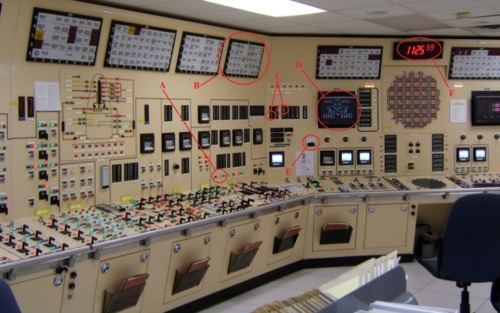Figure 1 below is a picture I took in 2009 of the NRC’s boiling water reactor (BWR) control room simulator. At the time of the picture, the “reactor” was operating at 100% power. I’ve annotated the picture to show some of the information readily available at a glance from the control room’s main panels.
Figure 2 is a picture said to have been taken yesterday in the control room of the Unit 2 reactor at Fukushima Dai-Ichi. I’ve also annotated it to show the lack of readily gleaned information.
While Japanese workers seem to have restored lighting to the control room, no other source of power seems to have been restored. All the computer monitors are blank. The clock is dead. None of the equipment status lights and gauges appear to be functional. None of the annunciator windows are lit—and the plant is far from a condition where no parameters are in alarm status.
TEPCO and the Japanese government have been criticized in some quarters for not being forthcoming about the accident’s details.
What information about the reactors might they even have to withhold?
Figure 1: BWR Control Room

A – Lights show equipment status. Red indicates valves that are open, pumps that are running, and electrical breakers that are closed, while green indicates the opposite conditions.
B – Annunciators provide audible alarms and flashing visual indications when plant parameters are outside expected ranges.
C – Triangular flags on the left side show parameter values against scale on the right side.
D – Computer monitors display key system parameters and parameter trends.
E – Hand on this gauge indicates a pressure value against the scale across top.
F – Clock
Figure 2: Fukushima Unit 2 Control Room

A – Computer monitors are blank.
B – Clock out of service.
C – Annunciators seem to be de-energized: no alarms reported despite many plant parameters off-normal.
D – Equipment status indicator lights not available.
E – Instrument gauges all downscale (not reading parameter values).
